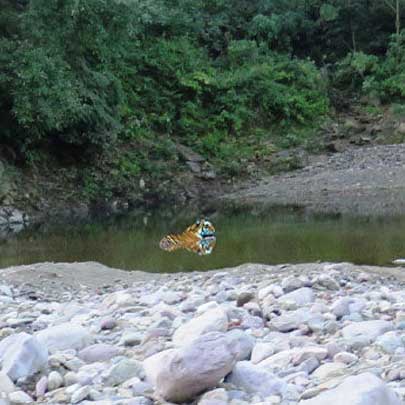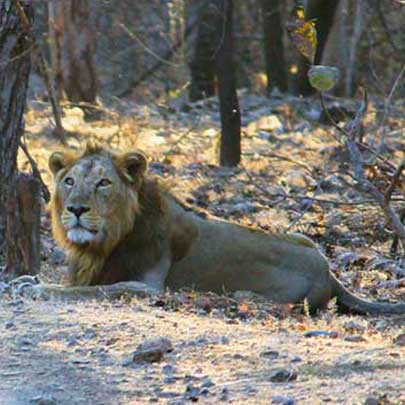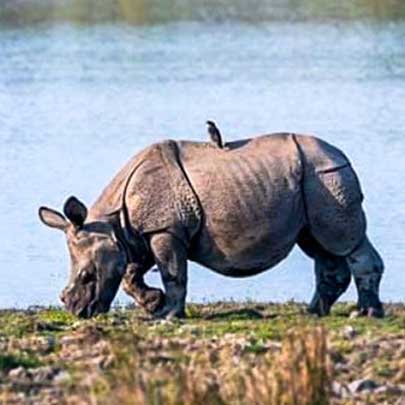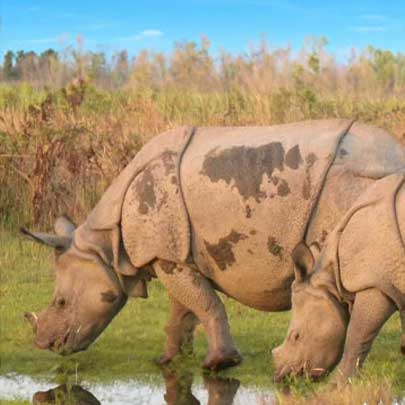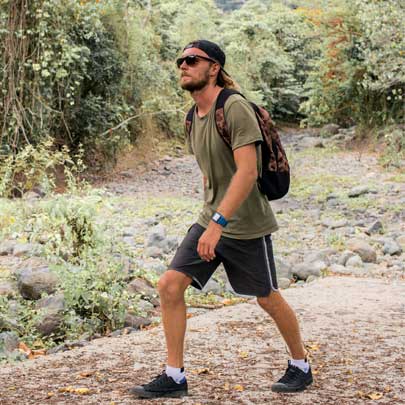How To Plan A Responsible Adventure Trip In India
How To Plan a Responsible Adventure Trip
in India
India is a dreamland for adventure lovers. From trekking the Himalayas to rafting down snow-fed rivers, diving into turquoise seas, or camping in the Thar Desert, the country’s rich biodiversity and culture make every journey extraordinary.
But with great exploration comes great responsibility. A responsible adventure trip in India means travelling in ways that preserve fragile ecosystems, respect local traditions, and empower communities. Whether you’re planning a short getaway or a multi-week expedition, here’s a step-by-step guide to travelling sustainably — featuring organisations like Wildlense Eco Foundation and Wildlense Wild Retreat, who champion eco-friendly tourism.
Why Responsible Adventure Travel Matters

Adventure tourism is growing fast in India, and without sustainable practices, it can lead to habitat loss, plastic pollution, and cultural erosion. By embracing eco-friendly travel in India, you help:
-
Conserve forests, rivers, and marine ecosystems
-
Protect endangered species and wildlife corridors
-
Support livelihoods through community-based tourism
-
Keep ancient art forms and traditions alive
Projects such as Wildlense Eco Foundation work tirelessly to restore forest habitats and spread awareness about conservation among travellers and locals alike. Staying at nature-focused getaways like Wildlense Wild Retreat also ensures your holiday revenue supports rewilding and rural employment.
Step 1: Choose Sustainable Adventure Destinations

India offers a variety of eco-friendly spots perfect for mindful explorers:
-
Spiti Valley & Ladakh – Remote treks, monasteries, and community homestays
-
Rishikesh & Uttarakhand – River rafting, yoga retreats, and forest camping
-
Meghalaya – Living root bridges, caving, and responsible hiking
-
Goa (beyond beaches) – Kayaking in mangroves and heritage cycling tours
-
Andaman & Nicobar Islands – Snorkelling and scuba diving in marine protected zones
-
Madhya Pradesh & Central India – Wildlife safaris in tiger reserves, especially near conservation hubs like Wildlense Wild Retreat
Look for destinations certified by eco-tourism boards or linked with conservation organisations such as Wildlense Eco Foundation.
Step 2: Travel During Low-Impact Seasons
Avoid peak months to reduce pressure on resources and enjoy calmer trails:
-
Visit Rajasthan’s dunes in early winter or spring, not during Christmas/New Year rush
-
Trek Himalayan passes after monsoon (Sept–Oct) or late spring (May–June)
-
Explore beaches and coastal areas in October or March when crowds are fewer
Step 3: Pick Eco-Friendly Accommodation

Where you stay shapes your footprint. Choose hotels, camps, and lodges that:
-
Use renewable energy (solar, wind, or hydro)
-
Practise waste segregation and composting
-
Serve organic, locally sourced meals
-
Offer cultural exchanges like folk music nights or cooking lessons
Wildlense Wild Retreat, for instance, offers immersive stays surrounded by forest, combining comfort with strict conservation ethics.
Step 4: Support Local Communities
Your adventure becomes meaningful when you connect with people who call these landscapes home:
-
Hire certified local guides for treks, rafting, or safaris
-
Buy handicrafts, honey, spices, or textiles directly from artisans
-
Enjoy regional dishes at family-run cafés or homestays
-
Contribute to village tourism funds or skill-training initiatives
Community support is at the heart of responsible travel in India.
Step 5: Minimise Waste and Protect Nature
![]()
Practise the Leave No Trace ethic on every trip:
-
Carry a reusable water bottle with a purifier
-
Bring cloth shopping bags and bamboo or steel cutlery
-
Say no to single-use plastics and packaged snacks
-
Keep campsites clean — pack out everything you brought in
-
Stick to marked trails to prevent soil erosion and habitat damage
Many conservation groups, including Wildlense Eco Foundation, organise forest or river clean-up drives where travellers can volunteer.
Step 6: Opt for Low-Carbon Transport
Transport often makes up most of a trip’s carbon footprint. Lower yours by:
-
Travelling on trains or intercity buses instead of domestic flights
-
Carpooling or sharing jeeps to remote villages or safari zones
-
Using bicycles or electric rickshaws for short trips
-
Walking whenever possible — it’s free, healthy, and sustainable
Step 7: Respect Local Cultures & Wildlife

Responsible tourism is rooted in respect:
-
Dress modestly in rural regions, monasteries, or temples
-
Ask permission before taking photographs of people or rituals
-
Watch wildlife from a safe distance; never feed or disturb animals
-
Choose safaris that follow strict ethical guidelines rather than overcrowded or noisy tours
At places like Wildlense Wild Retreat, naturalists guide you through forests while explaining how to observe animals without disrupting their behaviour.
Step 8: Prepare Safely for Adventure Sports
Whether you’re planning trekking, scuba diving, rock climbing, or paragliding, safety and sustainability go hand-in-hand:
-
Book licensed operators who follow eco-standards and limit group sizes
-
Carry only essentials; overpacking adds strain on porters and the environment
-
Get the right permits and adhere to local regulations
-
Invest in quality, reusable gear rather than disposable items
Step 9: Get Involved in Conservation
Volunteering enriches your travel experience and leaves a legacy. Wildlense Eco Foundation offers opportunities like:
-
Tree plantation drives near wildlife corridors
-
Awareness workshops for schoolchildren in buffer villages
-
Clean-up missions in protected forests and rivers
Even dedicating a day to conservation work adds purpose to your adventure.
Step 10: Share Your Journey Responsibly
Social media is a powerful way to advocate for sustainable adventure tourism:
-
Post about eco-friendly operators and stays (like Wildlense Wild Retreat)
-
Use hashtags such as #ResponsibleTravelIndia, #SustainableAdventure, #EcoTourismIndia
-
Share tips on reducing plastic, protecting wildlife, and supporting NGOs
-
Avoid geotagging sensitive spots that might get damaged by mass tourism
Sample Itinerary: 7-Day Responsible Adventure Trip
Day 1–2: Arrive in Delhi, travel by train to Rishikesh. Enjoy yoga, local food walks, and a guided rafting session with eco-certified outfitters.
Day 3–4: Drive to Pilibhit Tiger Reserve and stay at Wildlense Wild Retreat. Join their naturalists on ethical safaris and attend a conservation talk.
Day 5–6: Trek through Kumaon villages, stay in homestays, and plant trees with Wildlense Eco Foundation volunteers.
Day 7: Return to Delhi; offset your trip’s carbon footprint by donating to reforestation projects.
Quick Checklist for Responsible Adventurers
-
✅ Research destinations with eco-certification
-
✅ Travel light with reusable essentials
-
✅ Respect cultural etiquette and wildlife rules
-
✅ Support NGOs and ethical retreats like Wildlense
-
✅ Offset your emissions via tree-planting or conservation donations
Final Conclusion
A responsible adventure trip in India combines the thrill of exploration with thoughtful choices that nurture the land and people you meet. By selecting sustainable destinations, staying at places like Wildlense Wild Retreat, and partnering with conservation bodies such as Wildlense Eco Foundation, you make your holiday a force for good.
Pack light, tread gently, and let your next Indian adventure leave behind not just footprints — but forests, livelihoods, and stories worth sharing.




































